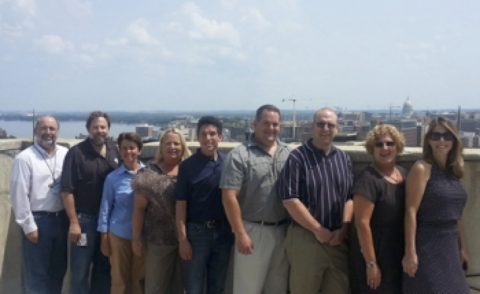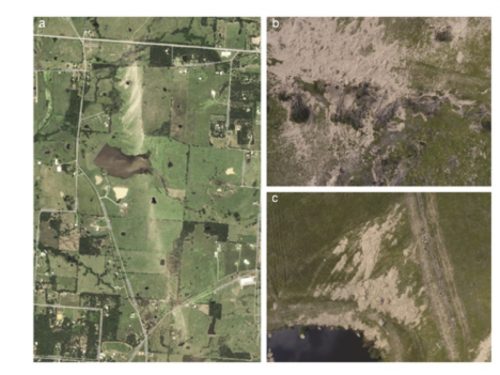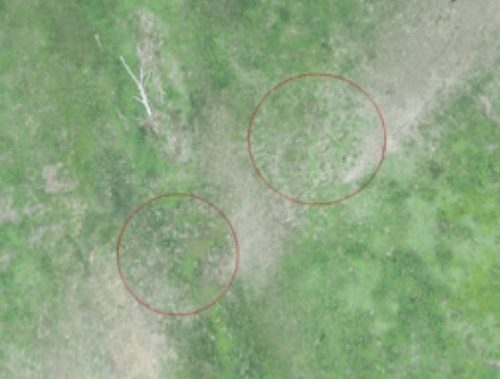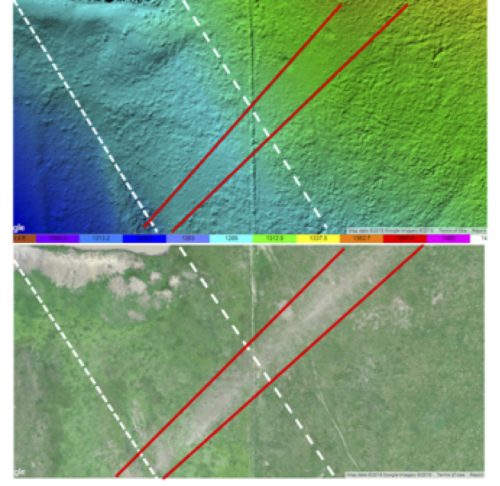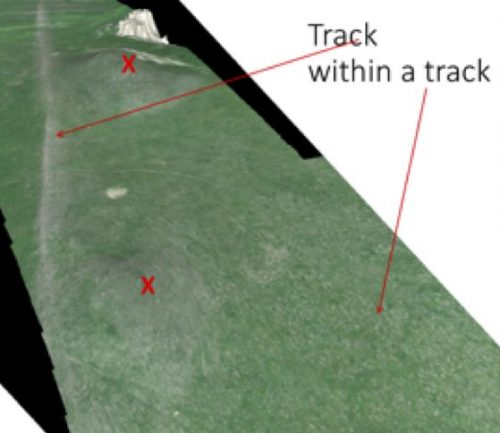by Sarah Benish and Rafael Loureiro
Academic institutions are often highly regarded in terms of ground-breaking research, but less commonly for their science-related political engagement. As two scientists in academia, we feel that it is not only our duty to be engaged in scientific political matters but also feel compelled to share our enthusiasm about science policy with our students and peers. We should all have a common goal to communicate science to policymakers, allowing better, science-informed decisions.
Through the Voices for Science program at AGU, we gathered at a two-day workshop in April 2018 with ~25 other scientists to focus on a common goal—how to be influencers in our fields about better communication of science to the general public and policy makers. We were given the opportunity to learn about the latest science policy initiatives and build on our own communication skills, such as practicing requesting that our representatives do something specific, like supporting or opposing a bill or joining a certain caucus (also known as “the ask”). The next day, we actively put these skills in use by meeting with congressional representatives on the Hill.
Since so many of us in the sciences are gathered this week at the AGU conference in Washington, D.C., we hope, by sharing our individual experiences in participating in this year-long program, you may be inspired to engage science policy in your own way, at your own institutions.
Sarah:
I am a fourth-year Ph.D. student in atmospheric and oceanic science at the University of Maryland. I study air pollution production and transport in the North China Plain and have interests in science policy, communication, and research. Originally from Oshkosh, Wisconsin, the home of the Experimental Aircraft Association, I became interested in becoming a scientist after earning my private pilot’s license.
Before Voices for Science, I had never interacted with my elected representatives before. My first experience was when I met with six legislators on the Hill with AGU. I enjoyed telling my story, explaining my research, and discussing the importance of consistent science funding in the congressional budget. Meeting with decision makers as a group was particularly useful at the beginning, especially when bringing up the “ask,” but by the end of the day, I felt confident enough to help lead the conversation to issues that were important to me.
Since meeting with my representatives, I have been regularly communicating with them. For example, when a new study linking air quality and diabetes was released in July, I forwarded the article to my representative who expressed concern about air quality legislation hurting the economy. Additionally, I sent my blog posts about my life as an #actuallivingscientist to my legislators to tell my story in how I became interested in science. I thanked my senator for supporting the Hidden Figures Congressional Gold Medal Act and asked my other senator to co-sponsor the act. However, one of my favorite interactions so far was when my senator’s office called to thank me for sending an op-ed I published in my local newspaper about air quality and health.
AGU and the Voices for Science program has provided me with support throughout this remarkable experience. I realized that many students, like me, had never contacted their congresspeople before and wanted to fill that need. So in September, I hosted a congressional letter writing breakfast at the student union at the University of Maryland. Over free breakfast, students wrote letters about science funding in FY19 to their elected representatives and were given resources and letter writing templates. In total, 40 letters to 8 different states were written including Texas, Wisconsin, Pennsylvania, and Maryland.
I was really excited to see University of Maryland undergraduate and graduate students participate in this event since many had never written their representative before. Students wrote about how basic science impacts their daily lives as well as about important data sources influential in their research. Since the event, participants have told me their representatives contacted them to further discuss science funding. That these letters have started such a conversation is a success to me.
Rafael:
I am a space botanist and currently hold two positions, one as a scientist at Blue Marble Space Institute of Science and an assistant professor at Winston-Salem State University. Quite honestly, I never knew what I wanted to do with my life but I knew that I wanted to make a difference and liked dinosaurs, so biology was the most obvious route. I never knew that dinosaurs would become a distant hobby and that the “making a difference” part would be such a pivotal part of my daily activities.
Through my teaching and research I am able to not only touch lives but also mold minds: minds avidly in search for new, exciting information about life here on Earth and possibly elsewhere in the universe. Minds that are constantly seeking to share knowledge with anyone willing to listen (and let me tell you – they are out there by the buckets full).
Voices for Science allowed me to get better at communicating my science, to tailor my speech to different audiences, from K-12 students to politicians. I have learned that they all want to listen, but it is up to you to take the first step.
Many of my initiatives involved students and my departmental peers. The greatest challenge was to show them that sharing your science with any audience willing listen to you involves adaptation and dialog. Adaptation means tailoring our speech and not try to bury people with data, charts, and super cool statistics that are completely irrelevant to them. Instead, we tell them how our science impacts they daily or future lives. Dialog means learning how to listen to what they have to say, to what it is important to them, and how can we make it important to us.
Policymakers are no different. They want to hear from you, even when your point of view, your research, or that particular budget point that you are asking for him or her to vote for goes against their agenda. The receptiveness so far has been uncanny, especially when students are involved. Students can be a great outlet for many of your professors in academia to use to communicate your science or the importance of science to your representative, your students. Young, passionate minds are among the best tools I have seen for engaging people in science policy initiatives.
Why not serve as a mentor in a Science Policy club? Organize debates between students on matters of budgeting for science. Invite local representatives to tour your institution and have students show them their passion for the science that they are developing (and most of their work is funded by agencies jeopardized by budget cuts). This is one of those opportunities for a handshake and a picture with students and your representative near that cool, very expensive NSF funded microscope—a picture you can resend when an important vote is about to come up.
With all that being said, the most important lesson I have learned from Voices for Science is that anyone can do science policy engagement. Against facts there is little room for debate, but in order to make those facts available we (scientist/students) need to be out there, sharing our science and asking everybody – how can we change this situation together?
If you are passionate about science and thinking about contacting your representatives about it, we encourage you to go for it! Here are a few suggestions:
- Have a goal. Before starting, know what you want to communicate to your elected officials. Have a clear message and a well-defined “ask.” For more information, visit AGU and AMS websites.
- Know your limits. Stay within your area of expertise or knowledge. Do not be afraid to say, “I don’t know.” If you know someone who does know, offer to connect your representative with that person.
- Encourage students. Part of our job as educators and researchers is to challenge each other’s ideas and open the door to new opportunities. Students who are already interested in science policy will partake in opportunities, but others need encouragement (sometimes, just free food) to commit to participating.
- Seek support from professional societies, like AMS. Did you know that AMS hosts a summer policy colloquium? How about the involvement AMS has briefing Capitol Hill? There are also events during the 99th Annual AMS meeting, including town halls with Marcia McNutt, the president of the National Academy of Science, Jim Bridenstine, administrator of NASA, and Bob Riddaway, president of the European Meteorological Society.
- They want to hear from you. Share your science with your local representative, either by sending him/her your latest research paper with a short commentary in layman language or inviting them to come see your lab. Your representatives need to be aware of the cool science you are doing.
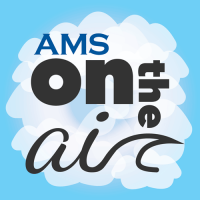 Listen from the AMS website or your favorite podcast app as Monzón talks in depth about the personal and professional challenges of the hurricane–and a situation that in many varieties AMS members eventually must face: Warning your own neighbors, communities, and audiences of impending disaster as its bears down on your own families and homes.
Listen from the AMS website or your favorite podcast app as Monzón talks in depth about the personal and professional challenges of the hurricane–and a situation that in many varieties AMS members eventually must face: Warning your own neighbors, communities, and audiences of impending disaster as its bears down on your own families and homes.